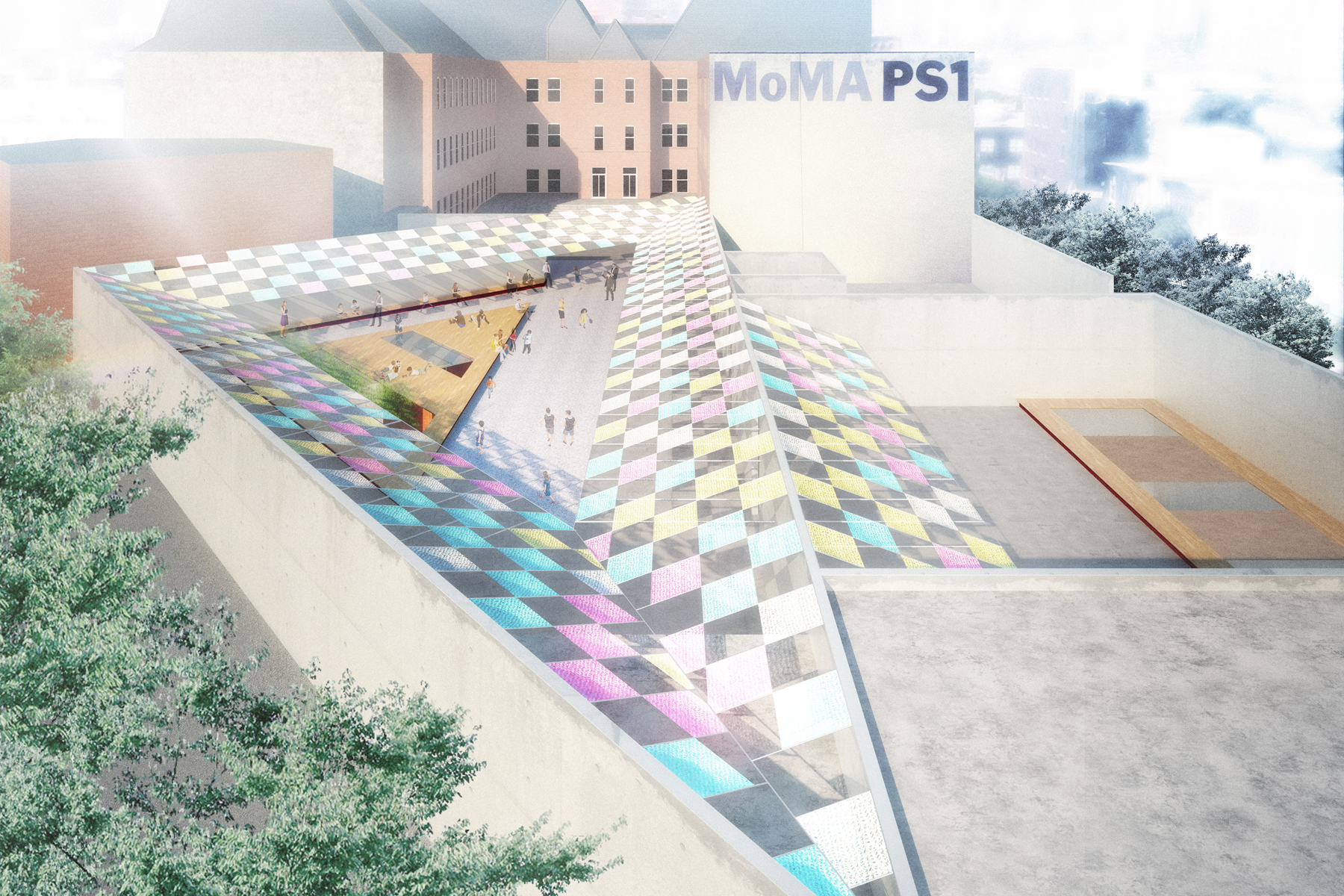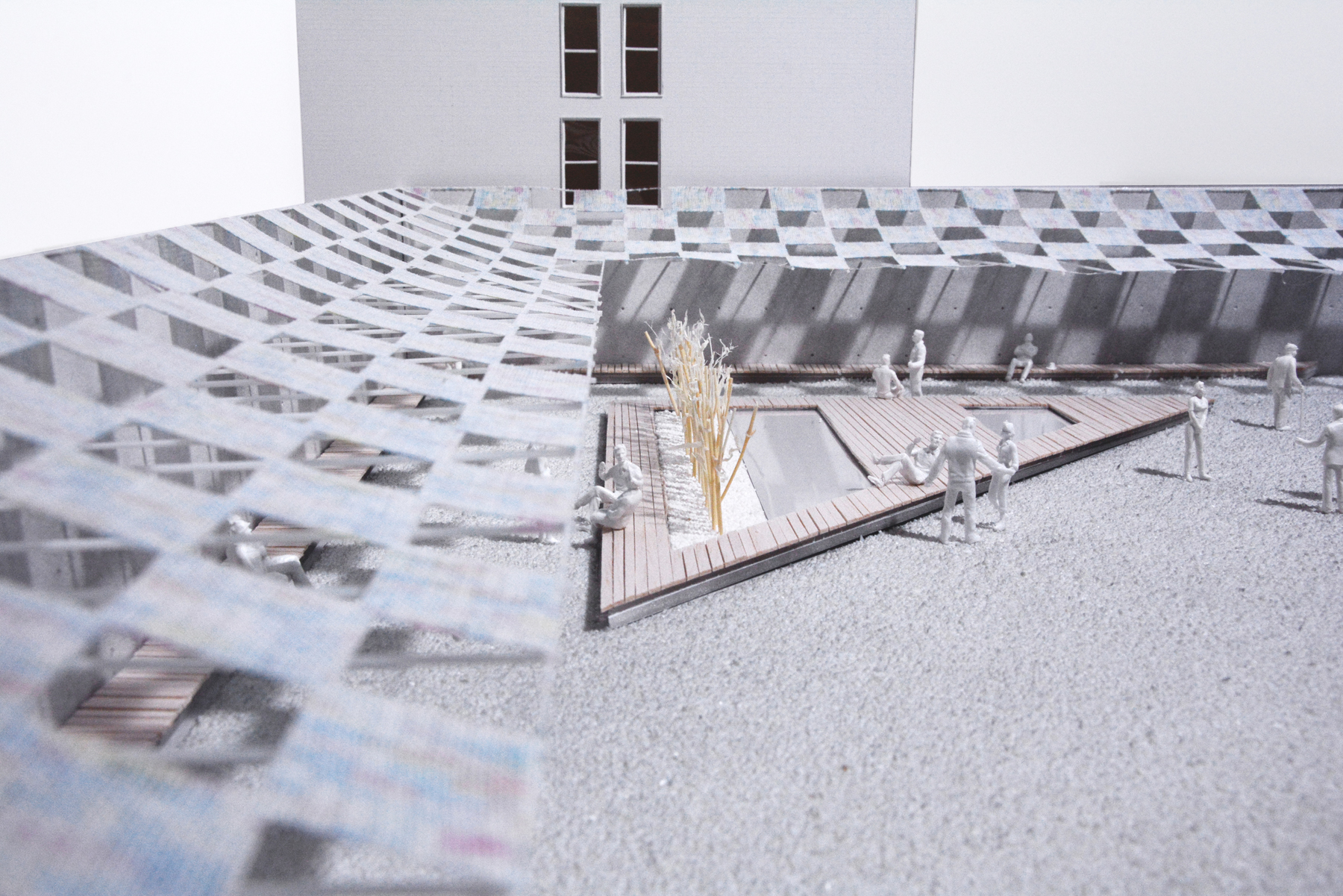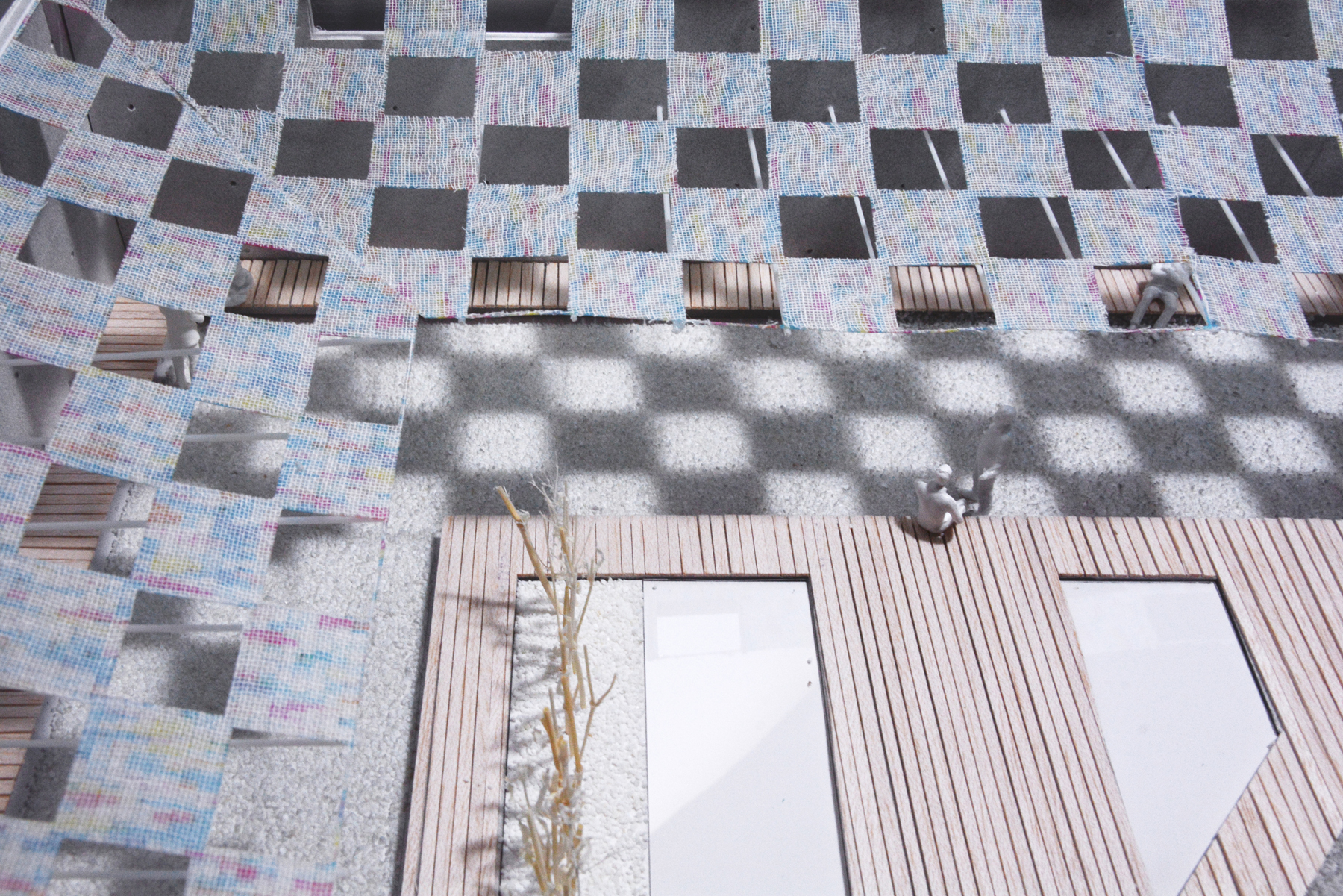
BAG YARD
Competition_YAP MoMA PS1 | Program_Summar Pavilion | Year_2017.12 | Status_Invited Competition | Location_New York, United States | Material_Garbage Bags | Structure_Tensile Structure | Visualization_Junki Wakuda | Design Team_Studio 3A
MOMA PS1で毎年開催されるサマーパビリオンプログラムに、ゴミ袋を再利用したキャノピーを提案した。
アメリカで年間消費されるゴミ袋は1000億枚にも及び、1250万バレルもの石油が製造過程で消費される。それらが無害化するにはおよそ1000年の歳月がかかるとされている。ここではゴミ袋を単純にリサイクルするのではなく、新たな価値を生み出すためにアップサイクルし、訪れる人に対して素材の新たな可能性を提示することを目指した。
日除けとして市松に配された幅1200長さ1500ミリのテキスタイルは、ゴミ袋をニット状に編んでラグや寝袋を作って寄付する活動を行っている団体と連携して製作される。
キャノピーを支える構造は、壁面のセパ孔を利用して単管パイプを壁から持出しケーブルで吊るテンザイル構造とすることで、地面に基礎を設けることなく最小限のエレメントで日除けをかけることが可能となる。
夏の会期が終了した後、形を代え寝袋として配布されるゴミ袋は、この素材がもつ不可避な末路に対して、建築というプロセスを通して新たなストーリーを紡ぎ始める。
BAG-yard is a shading canopy made by plastic bags proposed for the Summer Pavilion Program hosted by MOMA PS1.
According to a statistics, 100 billion plastic bags are annually consumed in the US and 12.5 million barrel of oil is processed to produce them. This material takes up to 1000 years to degrade into nature. The proposal aims not simply recycle the material, but upcycle it to showcase new values of the material.
Plastic bags are woven to create 1200x1500mm shading textiles by a charity organization who makes sleeping bags with garbage bags for donation. The canopy is supported by cantilevered steel pipes hanged by tension cable to form a tensile structure, in order to overhang the structure from the existing concrete walls without touching the ground.
Once the canopy dismounted after the event, the textiles will change into sleeping bags and donate to people for charity to compile alternative story of the material to people.
BAG YARD
| Competition | YAP MoMA PS1 |
| Program | Summer Pavilion |
| Year | 2017.12 |
| Status | Invited Competition |
| Location | New York, United States |
| Material | Garbage Bags |
| Structure | Tensile Structure |
| Visualization | Junki Wakuda |
| Design Team | Studio 3A |
MOMA PS1で毎年開催されるサマーパビリオンプログラムに、ゴミ袋を再利用したキャノピーを提案した。
アメリカで年間消費されるゴミ袋は1000億枚にも及び、1250万バレルもの石油が製造過程で消費される。それらが無害化するにはおよそ1000年の歳月がかかるとされている。ここではゴミ袋を単純にリサイクルするのではなく、新たな価値を生み出すためにアップサイクルし、訪れる人に対して素材の新たな可能性を提示することを目指した。
日除けとして市松に配された幅1200長さ1500ミリのテキスタイルは、ゴミ袋をニット状に編んでラグや寝袋を作って寄付する活動を行っている団体と連携して製作される。
キャノピーを支える構造は、壁面のセパ孔を利用して単管パイプを壁から持出しケーブルで吊るテンザイル構造とすることで、地面に基礎を設けることなく最小限のエレメントで日除けをかけることが可能となる。
夏の会期が終了した後、形を代え寝袋として配布されるゴミ袋は、この素材がもつ不可避な末路に対して、建築というプロセスを通して新たなストーリーを紡ぎ始める。
BAG-yard is a shading canopy made by plastic bags proposed for the Summer Pavilion Program hosted by MOMA PS1.
According to a statistics, 100 billion plastic bags are annually consumed in the US and 12.5 million barrel of oil is processed to produce them. This material takes up to 1000 years to degrade into nature. The proposal aims not simply recycle the material, but upcycle it to showcase new values of the material.
Plastic bags are woven to create 1200x1500mm shading textiles by a charity organization who makes sleeping bags with garbage bags for donation. The canopy is supported by cantilevered steel pipes hanged by tension cable to form a tensile structure, in order to overhang the structure from the existing concrete walls without touching the ground.
Once the canopy dismounted after the event, the textiles will change into sleeping bags and donate to people for charity to compile alternative story of the material to people.





